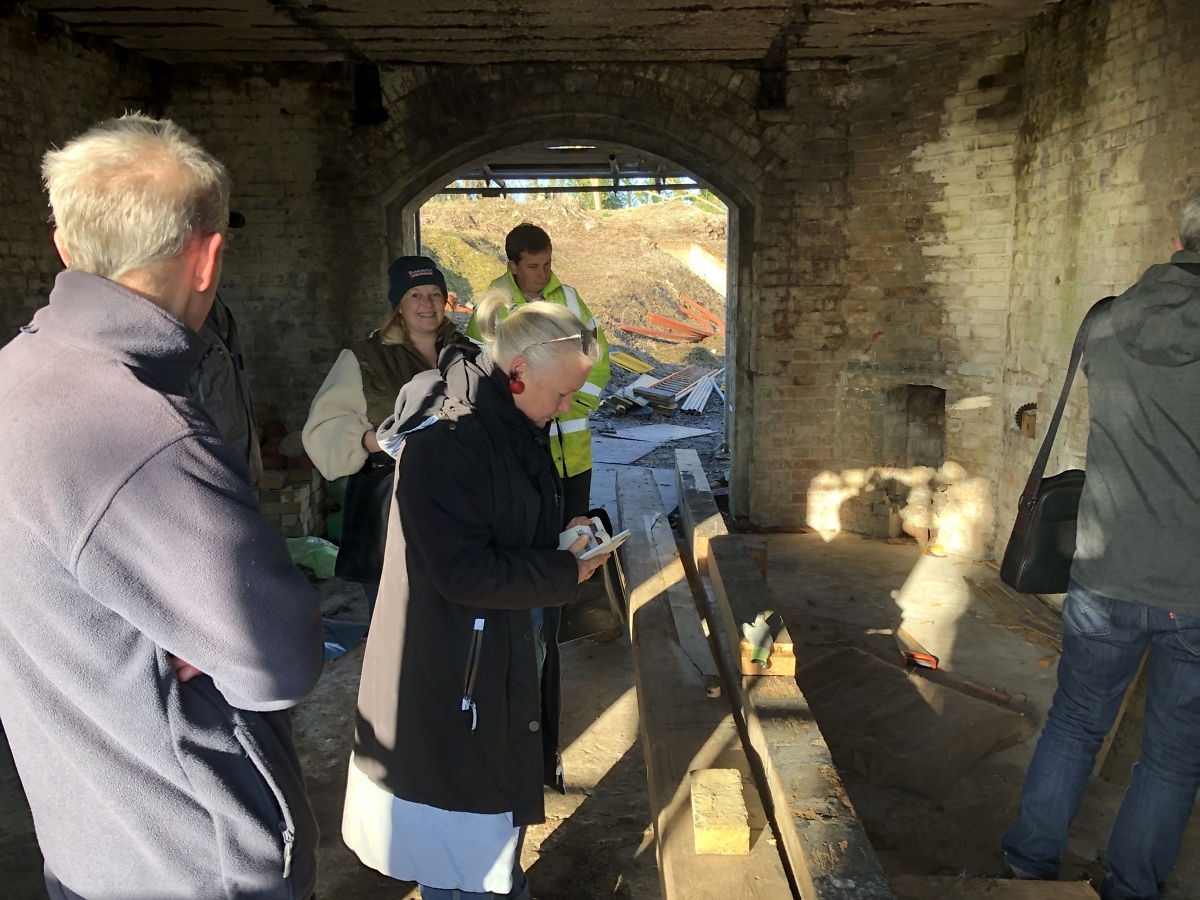Children’s Songs That Transcend Time [I Would Rather Walk With You Process Blog #2]
Listen to songs from pre-1800s sung by children and adults today!
Summary: When lockdown happened, I created parts of my new community artwork online. I worked with local people, teaching them to create sound effects on personal devices to capture a historical soundscape we know little about at Fort Burgoyne in Dover. From the 1800s to present day, children have often played in and around Fort Burgoyne. So, I asked children and adults to record two songs loved by children of the 1800s and still known today. This is how songs that predate the 1800s sound when sung by children and adults today!
Full story:
I Would Rather Walk With You is a musical composition and sound installation that will be installed in the West Wing Battery at Fort Burgoyne in 2021. The work will emit from gun loops [windows] on the Battery’s exterior and interior walls. I Would Rather Walk With You comprises a choral work, intimate narratives from people once stationed at the site, and a soundscape capturing how it might have sounded throughout history.

When I started designing how this artwork would sound, I wanted to reference Fort Burgoyne’s history and how it has been utilised by local people. I conducted research, which included visiting the Battery on several occasions. I wanted to gain a solid and creative sense of the place, and let my imagination run riot. When I visit the Battery, I imagine historic scenes and events that occurred there, and on closing my eyes hear them as a layered sound world, where all periods of time coexist in a spacious sonic symphony. This is how I imagine the finished piece will sound.
One of the sounds that punctuates my internal sound world is children screaming and whooping as they play in and around the Fort. I am aware that Fort Burgoyne has long been a place for children to explore and play in, and when I invited local people to record sound for this artwork, several mentioned playing there as a child. From the 50s through to the 90s, local people reported that games of the imagination were particularly popular at Fort Burgoyne: let’s pretend, soldiers, prisoners of war, and even lookout! While imagined, many of the games children play contain elements of truth, influenced by the history of a place and spread through urban myths that permeate our subconscious. I wanted to reference ‘play’ in this artwork, particularly as the Battery is such a vivid place, with nooks and crannies for hiding in, windows for to peer out of, and lookout spots to watch those who approach.
I’ve always had an interest in nursery rhymes and children’s songs, often referencing them in my work (see Requiem for Cross Bones). They capture history beautifully and contain a broad range of emotion, from naivety and innocence to ghostly eeriness. I hoped that local children and adults might record themselves singing some children’s songs to feature in I Would Rather Walk With You, particularly songs that were relevant to the site’s history and likely to have been known and possibly sung by children who played at Fort Burgoyne. I commenced by exploring entries in Iona and Peter Opie’s The Singing Game (1985, Oxford University Press) and folk song archives at the Online Vaughan Williams Memorial Library. I found two songs that are likely to have been known by children playing at Fort Burgoyne from the 1800s to the late 1990s. One is still well known today, and the other is known only by people in their later years.
Pop Goes The Weasel originates from the 1800s or possibly even earlier. Some believe it has Cockney origins, as people would pawn (‘pop’) their coat (‘weasel and stoat’). However, this proposed origin is not fully accepted, and as it is such an old song it is impossible to know for certain what its origins are. Opie’s The Singing Game provided several lyrical variations around the UK at different periods of time dating from 1853 to 1914. I edited these versions together to form a cohesive narrative. It is common for nursery rhymes to adapt and evolve as time passes, often referencing local features of the towns they are sung it. The last verse has been adapted to reference a Dover street that soldiers at the Fort marched along on a regular basis.
Pop Goes The Weasel
Half a pound of tuppenny rice
Half a pound of treacle
Mix it well and make it nice
Pop! Goes the weasel
Up and down the city road
Round and round the eagle
That’s the way the money goes
Pop! goes the weasel
Every night when I go out
The monkey’s on the table;
Take a stick and knock him off
Pop! goes the weasel
Up and down the Castle Hill Road
Round and round the steeple
Soldier men they march and trot
To Pop! Goes the Weasel!
Here’s a Prisoner We Have Got originates from at least the 1800s and compliments Fort Burgoyne’s history; in WW1, conscientious objectors were imprisoned there. It is less known today but I discovered that people in their later years (70s and over) have vague recollections of it and even remember alternative versions of it. Like The Volunteer Review, it’s melody is unknown, so I asked people: “The melody for this song is lost in time. Can you make one up?” I also invited people to add extra verses if they wanted to. Here is the basic lyric participants were provided with:
Here’s A Prisoner We Have Got
Here’s a prisoner we have got, we have got, we have got
Here’s a prisoner we have got, my fair lady
What’s the prisoner done to thee, done to thee, done to thee
What’s the prisoner done to thee, my fair lady
He would not go to war, go to war, go to war
He would not go to war, my fair lady
One half crown will set him free, set him free, set him free
One half crown will set him free, my fair lady
I only have a haypenny, haypenny, haypenny
I only have a haypenny, my fair lady
Away to prison he must go, he must go, he must go
Away to prison he must go, my fair lady
Over one hundred people registered to take part in creating recordings for I Would Rather Walk With You, and 430 recordings were submitted in total. 16 children and adults recorded themselves singing Pop Goes The Weasel and Here’s A Prisoner We Have Got and I cannot wait to feature some of these recordings in the work. I hope you enjoy listening to them as much as I have!
The Land Trust aim to establish the West Wing Battery as a community space for all to access, enjoy, relax and play in, a theme that is explored in I Would Rather Walk With You.
I Would Rather Walk With You is commissioned for Pioneering Places East Kent, delivered by The Land Trust at Fort Burgoyne, with the assistance of Dover Arts Development [DAD]. It is funded by National Lottery Heritage Fund, Arts Council England, Kent County Council, Canterbury Christ Church University and Historic England.




Leave a Reply